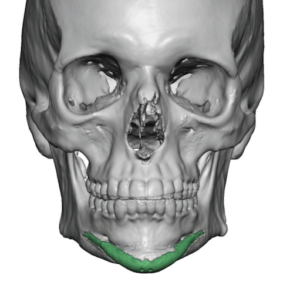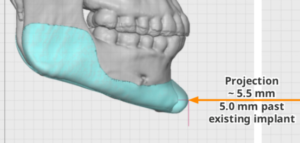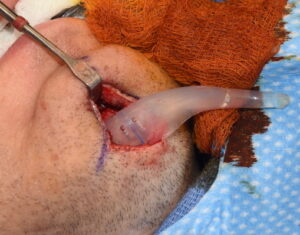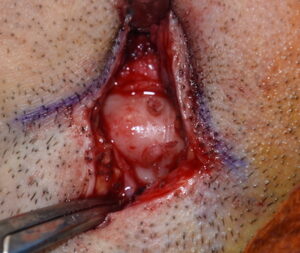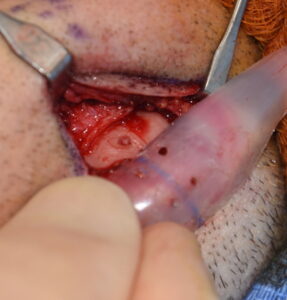Background: Chin implants are the most common form of aesthetic jaw augmentation, both historically and currently. Despite their effectiveness at the front edge on the jaw where they are placed, they affect less than one-third of the jawline surface area. Thus it is important for patients to understand what they can and can not. Patients often ask if getting a chin implant will improve their jawline…which historically probably meant the chin but today often means the jawline behind the chin.
As a result of their limited jawline augmentation effect, it is mot uncommon today for patients to ‘graduate’ to a more complete lower facial effect. This could be done with the use of standard jaw angle implants or a total or wrap around jawline implant. If it is the latter a 3D CT scan is needed to design and fabricate the jawline implant. In so doing the the existing chin implant can be seen like never before. Its style, size, position on the bone and the biologic response of the bone to the implant can be fully appreciated
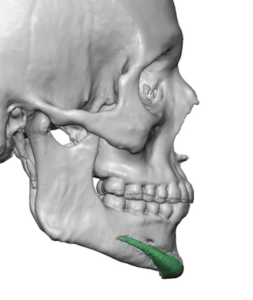
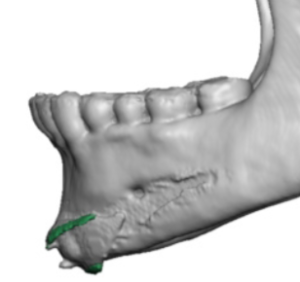
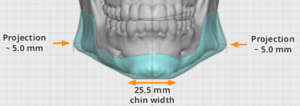
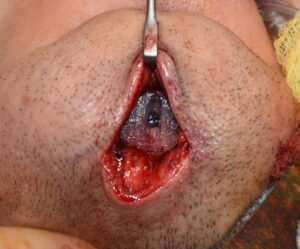
When designing and placing custom jawline implants there is a frequent opportunity to see how the bone has responded to the prior chin implant. Always seen is a limited underlying bone resorption (imprinting) and surrounding bony overgrowths. (bone remodeling) This demonstrates an expected response to the placement of a material on the bone which expands the natural biologic tissue boundaries. Once the tissues have been released from this pressure (imprinting) the body responds by trying to heal over it. (bony overgrowths. All of these 3D CT scan and intraoperative findings refute the historic and incorrect premise that chin implants cause progressive bone erosion.
Case Highlights:
1) Patients with prior/indwelling chin implants make up over one-third of custom jawline implant surgeries.
2) The required preoperative 3D CT scan needed for custom facial implant designing provides unparalleled observations of chin implant placements/positioning.
3) Removing the existing chin implant to place the custom jawline implant also provides direct inspection of their bony biologic response to it.
Dr. Barry Eppley
Indianapolis, Indiana



